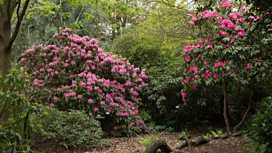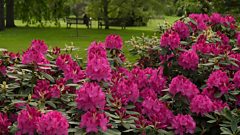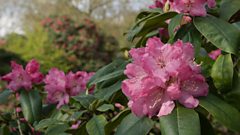Plant Invaders
Kathy Willis examines the unwelcome side effects of moving plants and seeds around the world during the 19th century. From 2014.
The Victorians' pride at the effortless movement of plants around the world during the late 19th century was having an unwelcome side effect. Invasive species were beginning to wipe out native populations of plants. With no natural predators to control them, one man's flower was turning into another man's weed.
Prof Kathy Willis hears how during the late 1800s, many invasive species from Japanese knot weed to Himalayan balsam to water hyacinth came from deliberate introductions and asks if today, trying to control them is ultimately futile?
As historian Jim Endersby explains both Charles Darwin and Kew's director Joseph Hooker were the first to examine the impact of invasives, having noticed on the island of St Helena and Ascension Island the effect on native plants.
One of the current biggest invaders is lantana, familiar to British gardeners as a small pot plant. As Shonil Baghwat of the Open University reveals, since its introduction to Kolkata Botanical garden in the 1870s it decimated native teak plantations. But today opportunities exist to exploit its presence for the wood, basketry and paper industries.
And Kathy Willis hears from Kew conservationist Colin Clubbe on the extent to which we should view invasive plants in our ecosystems as part of a strategy to maintain resilience to environmental change in the future.
Producer Adrian Washbourne.
Last on
More episodes
Previous
![]()
The history of Rhododendrons at Kew.
Clips
-
![]()
Plants: From Roots to Riches - Plant Invaders
Duration: 13:35
-
![]()
Invasive Plants
Duration: 00:29
Invasive Plants in the News
Broadcasts
- Thu 31 Jul 2014 13:45成人快手 Radio 4 FM
- Thu 3 Mar 2016 14:15成人快手 Radio 4 Extra
- Fri 4 Mar 2016 02:15成人快手 Radio 4 Extra
- Thu 6 Jul 2017 14:15成人快手 Radio 4 Extra
- Fri 7 Jul 2017 02:15成人快手 Radio 4 Extra
- Thu 11 Jul 2019 14:15成人快手 Radio 4 Extra
- Fri 12 Jul 2019 02:15成人快手 Radio 4 Extra
Royal Botanic Gardens, Kew
Delve deeper into plant science and find out more about plants featured in the series
The Power of Plants
Discover a selection of programmes relating to plants.
Podcast
-
![]()
Plants: From Roots to Riches
Our relationship with plants: a major new history by Kew's science director Kathy Willis.





